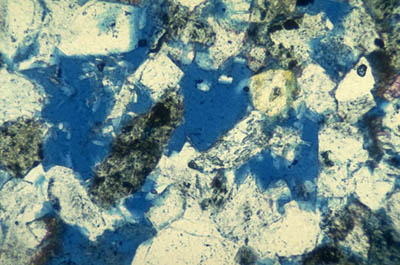1. n. [Geology]
The binding material in sedimentary rocks that precipitates between grains from pore fluids. Calcite and quartz are common cement-forming minerals.
See related terms: authigenic, cased hole, cementation, chlorite, diagenesis, hardground, lithification, sandstone

2. n. [Drilling]
The material used to permanently seal annular spaces between casing and borehole walls. Cement is also used to seal formations to prevent loss of drilling fluid and for operations ranging from setting kick-off plugs to plug and abandonment. The most common type by far is API Oilwell Cement, known informally as portland cement. Generally speaking, oilfield cement is thinner and exhibits far less strength than cement or concrete used for construction due to the requirement that it be highly pumpable in relatively narrow annulus over long distances. Various additives are used to control density, setting time, strength and flow properties. Additionally, special additives are often used to reduce the occurrence of annular gas flow. The cement slurry, commonly formed by mixing portland cement, water and assorted dry and liquid additives, is pumped into place and allowed to solidify (typically for 12 to 24 hours) before additional drilling activity can resume. The cement usually must reach a strength of 5,000 psi [34,474 KPa] before drilling or perforating. More advanced oilfield cements achieve higher set-cement compressive strengths by blending a variety of particle types and sizes with less water than conventional mixtures of portland cement, water and chemical additives.
See related terms: free water, kick, neat cement, plug and abandon, wait on cement
3. n. [Well Completions]
A generic term used to describe portland cement used in oil- and gas-well applications. In its simplest form, cement powder is ground from kiln-fired limestone and clay. However, modern oilfield cements are precise blends of quality assured materials to achieve consistent and predictable performance. Cement sets as the water in the slurry reacts chemically with the active ingredients, the most significant of which is tricalcium silicate reacting to create calcium silicate hydrate. Cement additives are used to control the setting
See related terms: cement additive